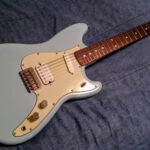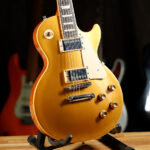Navigating guitar chords can sometimes feel like a fretboard puzzle, and the F# major chord (F sharp) is often a point of hesitation for many learners. While it might seem challenging initially, especially the barre chord version, understanding its construction and practicing smart techniques will unlock this essential chord for you.
This guide will break down the most common way to play the F# chord – the barre chord – and introduce an easier alternative perfect for beginners. We’ll cover step-by-step instructions, helpful tips, and practice methods to confidently add the F# major to your chord vocabulary.
Understanding the Full Barre F# Chord
The standard F# major chord is a barre chord, meaning your first finger acts as a “barre” pressing down multiple strings at once. This technique allows us to transpose chord shapes up and down the neck, making it incredibly versatile. The F# barre chord we’re discussing here is based on the shape of an E major chord, but moved up two frets.
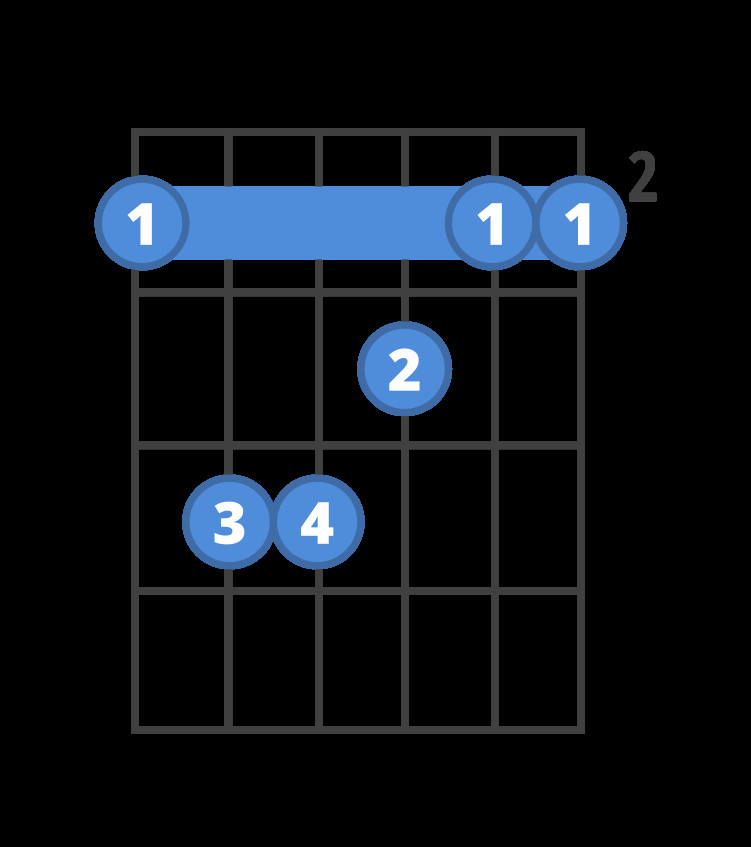 Chord diagram for the Gb guitar chord.
Chord diagram for the Gb guitar chord.
For beginners, barre chords can feel daunting. If you’re new to barre chords, feel free to jump to the easier F# version below.
Let’s tackle the full barre F# chord step by step:
-
Create the Barre: Position your first finger across all six strings just behind the 2nd fret. Ensure the edge of your finger is flat and pressing down firmly enough for each string to ring clearly.
-
Form the E Shape: Imagine an E major chord shape. Now, using your 2nd, 3rd, and 4th fingers, place them on the fretboard as if you were playing an E major chord, but positioned relative to your barre finger. Specifically:
- 2nd finger: 4th fret of the G string (3rd string)
- 3rd finger: 4th fret of the A string (5th string)
- 4th finger: 4th fret of the D string (4th string)
-
Strum All Strings: Strum all six strings. If you hear buzzing, it indicates that some strings aren’t being pressed down firmly enough, most likely by your barre finger.
Tips for Mastering the Barre F# Chord:
- Focus Barre Pressure: Concentrate pressure from your first finger on the thickest (low E) string and the thinnest (high E) strings. Slightly curving your finger can help achieve this.
- E Major Connection: Mentally connect this barre chord to the E major chord shape. This helps in finger placement and understanding the chord’s structure.
- Start Slow: Barre chords require finger strength. Begin practicing slowly, focusing on clean sound before increasing speed.
- Explore Alternatives: If the full barre F# is proving too challenging initially, don’t get discouraged! The easier version described below is a great starting point.
The Beginner-Friendly F Sharp Chord: The Mini-Barre
For guitarists just starting their chord journey, or those who find full barre chords uncomfortable, there’s an excellent alternative F# chord. This version utilizes a “mini-barre,” making it significantly easier to play while still producing a rich F# major sound.
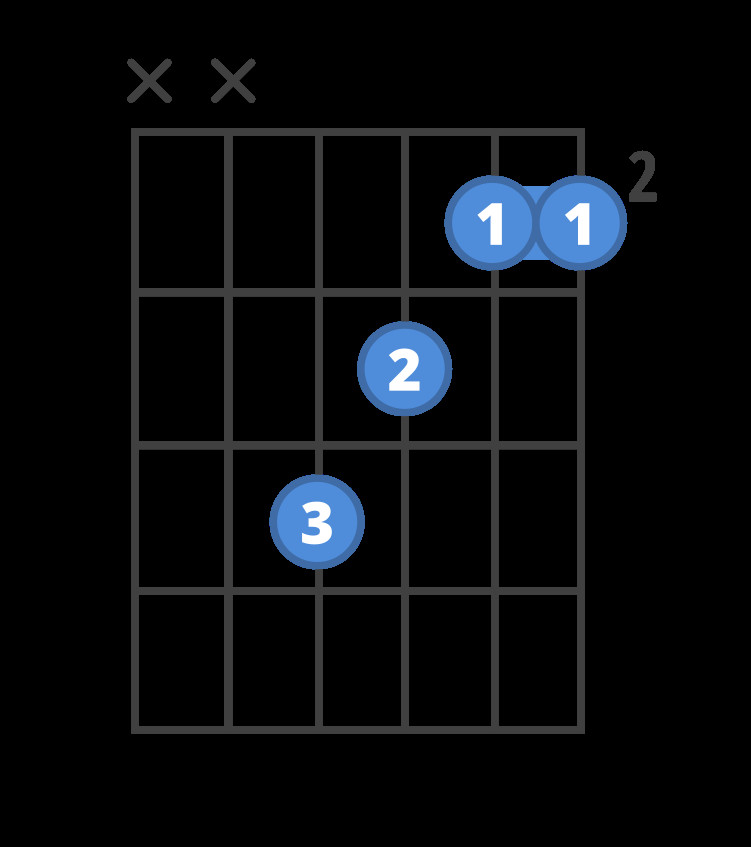 Chord diagram for the Gb guitar chord.
Chord diagram for the Gb guitar chord.
This simplified F# chord involves barring only the top two thinnest strings, requiring less finger strength and pressure.
Here’s how to play the beginner-friendly F# chord:
-
The Mini Barre: Place your first finger across the thinnest two strings (1st and 2nd – high E and B strings) at the 2nd fret. Ensure both strings ring clearly. This mini-barre should fit comfortably within the pad of your finger.
-
Add Middle and Ring Fingers: Now, use your 2nd and 3rd fingers to fret the following:
- 2nd finger: 3rd fret of the G string (3rd string)
- 3rd finger: 4th fret of the D string (4th string)
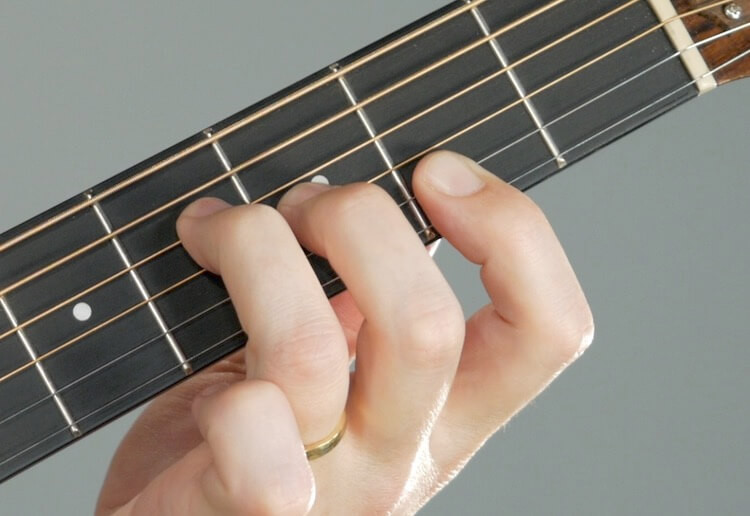 Chord diagram for the F# major chord small barre closeUp2.
Chord diagram for the F# major chord small barre closeUp2. -
Strum Four Strings: Strum only the thinnest four strings (from the D string downwards – strings 4, 3, 2, and 1). Avoid strumming the lower E and A strings for this version.
This version provides a clear and usable F# major chord sound, ideal for practice and songs that don’t require the fullness of the full barre chord.
Practice Exercises to Solidify Your F# Chord
Consistent practice is key to mastering any guitar chord. Here are some effective exercises to integrate the F# chord into your playing:
1. Chord Change: E to F# and Back
Practicing transitions between chords is crucial for smooth playing. Start by switching between E major (an open chord) and the barre F# major.
E
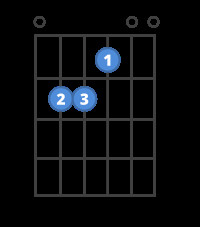 Chord diagram for the E guitar chord.
Chord diagram for the E guitar chord.
F#
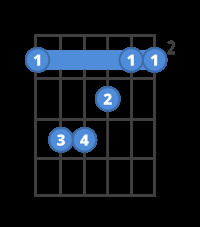 Chord diagram for the F# guitar chord.
Chord diagram for the F# guitar chord.
This exercise helps you internalize the relationship between the E shape and the barre F# chord derived from it. Focus on clean transitions and consistent rhythm.
2. Similar Shape Practice: F# Major and B Minor
Barre chords are shapes you can move around the fretboard. Practice transitioning between F# major and B minor (Bm), another common barre chord shape.
F#
 Chord diagram for the F# guitar chord.
Chord diagram for the F# guitar chord.
Bm
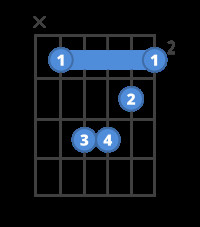 Chord diagram for the Bm guitar chord.
Chord diagram for the Bm guitar chord.
The B minor chord uses the same barre shape as F#, just shifted down a string set and up the neck. Practicing this transition improves your barre chord dexterity and shape recognition.
3. F# in the Key of B Major Chord Progression
Explore chords commonly used with F# by practicing chord progressions in the key of B major. Try this progression: F# – E – B – C#m.
F#
 Chord diagram for the F# guitar chord.
Chord diagram for the F# guitar chord.
E
 Chord diagram for the E guitar chord.
Chord diagram for the E guitar chord.
B
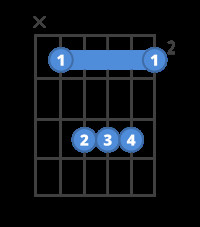 Chord diagram for the B guitar chord.
Chord diagram for the B guitar chord.
C#m
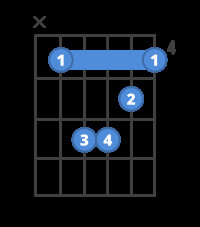 Chord diagram for the C#m guitar chord.
Chord diagram for the C#m guitar chord.
Playing chord progressions in context helps you hear how F# functions musically and makes practice more engaging. As you practice, listen for melodies and song-like patterns emerging from these chord changes – this makes learning more enjoyable and musically intuitive.
Make Practice Fun with Games
To make your F# chord practice even more engaging, incorporate guitar learning games! Apps like ChordBank offer interactive games that respond to your playing, turning practice into a fun and rewarding experience.
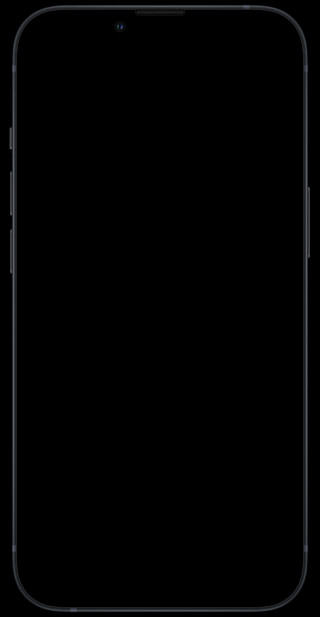 Guitar learning games on a phone.
Guitar learning games on a phone.
Games like ChordPop! or Blast-o-chords can be used to practice chord changes and accuracy in a playful environment. These games listen to your guitar through your device’s microphone and react to your playing in real-time.
Conclusion
The F

